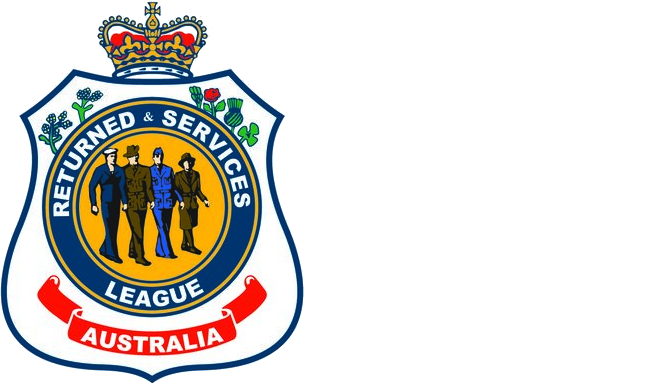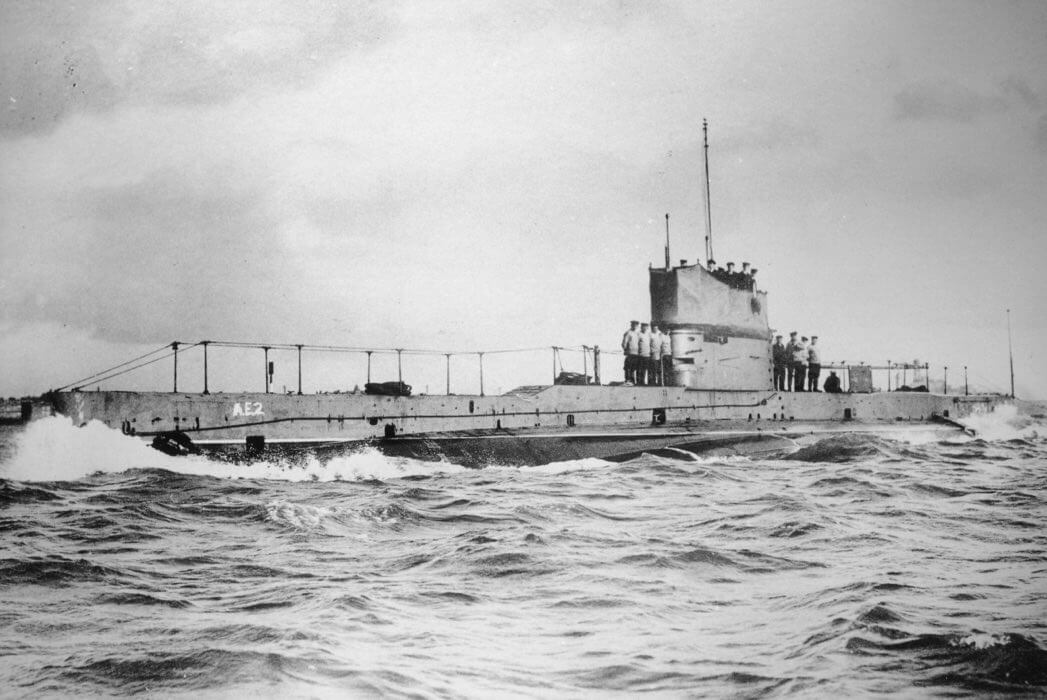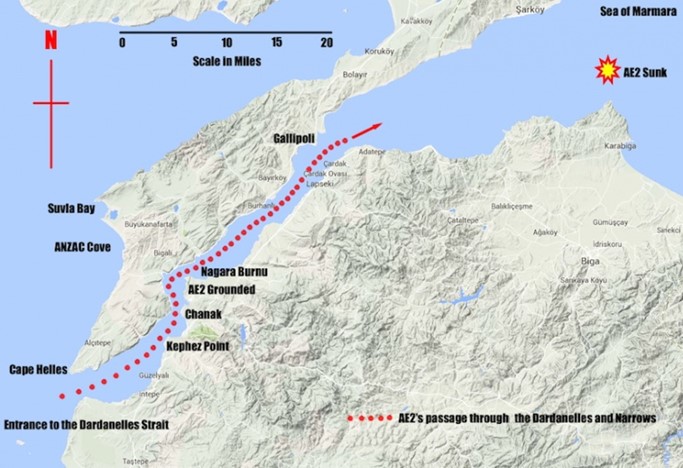HMAS Submarine AE2
His Majesty’s Australian Submarine AE2 in the Dardanelles
His Majesty’s Australian Submarine AE2 was launched in the yard of Vickers Ltd at Barrow-in-Furness, England on 18 June 1913 by Mr W H Wharton. She commissioned at Portsmouth on 28 February 1914 under the command of Lieutenant Commander (Lt Cdr) Henry Hugh Gordon Dacre Stoker, RN. Her crew of 35 comprised officers and ratings from both the Royal Navy and Royal Australian Navy and she was the second of two E Class submarines built for the fledgling RAN.
Following the outbreak of World War I in August 1914, AE2 and AE1 were ordered to join the Australian Naval and Military Expeditionary Force assigned to capture the German colonies in New Guinea. AE2 took part in the seizure of New Britain, culminating in the capture and surrender of Rabaul on 13 September 1914 and the general surrender of the New Guinea territories on 22 September 1914. AE1 was lost with all hands during a patrol in support of this operation on 14 September 1914.
Service in the Dardanelles
In February 1915 AE2 joined a Royal Navy squadron based on the island of Tenedos in the Aegean Sea. From there she operated in support of the unfolding Dardanelles campaign.
Prior to 25 April 1915, AE2’s part in operations was minimal, but that changed when Vice Admiral de Robeck, Commander-in-Chief (C-in-C), Eastern Mediterranean Fleet, approved plans presented to him by LtCdr Stoker to attempt to force a passage through the 35-mile-long, heavily fortified Dardanelles Strait and enter the Sea of Marmora (also spelt Marmara). If this could be achieved, enemy shipping transiting between the Bosphorus and the Dardanelles could be prevented from reinforcing and resupplying Turkish troops on the Gallipoli peninsula.
All previous attempts by Allied submarines to pass through the strait had failed due to an effective sea denial operation mounted by the enemy. Minefields, fixed and mobile gun batteries, searchlight surveillance and patrolling Turkish warships, coupled with natural navigational hazards, had made the Dardanelles seemingly impenetrable. The C-in-C remarked that if Stoker and his crew were successful there would be “no calculating the result it will cause, and it may well be that you will have done more to finish the war than any other act accomplished.”
On the morning of 24 April, the attempt began, however, the mission was soon abandoned when one of the submarine’s forward hydroplanes failed.
25 April 1915
AE2 entered the Dardanelles at about 2:30am on 25th April traveling on the surface as far as possible.
Throughout AE2’s passage, searchlights continually swept the strait and she at 4:30am gun batteries opened fire from the northern shore and she dived. Passage through the minefields submerged mooring wires tethering the mines continually scraped along AE2’s sides for the next half hour. Twice AE2 surfaced in the minefield to make navigational observations. At 6:00am AE2 was submerged at periscope depth with the sea flat and calm when forts on both sides of the Narrows sighted her and opened fire.
AE2 attacked what he thought to be a small cruiser with a torpedo was heard to hit as the submarine quickly dived to avoid a torpedo boat destroyer which was attempting to ram on the port side. Later as the vessel was rising she hit bottom exposing the conning tower near Fort Anatoli Medjidieh and came under fire until efforts to refloat her succeeded. AE2 then slid back into the safety of deep water but then grounded again on the Gallipoli shore, exposing herself to the enemy. AE2 again refloated and slid back into the depths.
Shortly afterwards AE2 again rose to periscope depth where Lt Cdr Stoker established his position as approaching Nagara Point. On all sides he was surrounded by pursuit craft and each time he showed AE2’s periscope the pursuing destroyers turned to ram. Consequently, in an attempt to shake off the enemy, Stoker bottomed the submarine on the Asiatic shore to await developments.
Throughout 25 April, AE2 lay in 80 feet of water while enemy ships continually searched overhead. On one occasion the AE2’s casing was struck by a heavy object being trailed along the bottom by one of the vessels above but fortunately it did not snag or critically damage the submarine.
At approximately 9:00pm Stoker blew ballast tanks and surfaced having been submerged for over 16 hours. All signs of shipping had vanished and the opportunity was taken to recharge the submarine's batteries and to send a signal to the Commander-in-Chief notifying him of the successful passage through the ‘Narrows’ and past Nagara Point.
This profoundly changed the course of the Gallipoli landing. Unbeknown to Lt Cdr Stoker the message had in fact been received and relayed to the British Commander-in-Chief, Sir Ian Hamilton at the crucial moment when Hamilton was deliberating with his staff whether or not to order a general evacuation. In part based on the report they decided to remain and the rest is history.
The track of AE2 through the Dardanelles and into the Sea of Marmara (Marmora) where she was later lost.
26 April 1915 – 30 April 1915
AE2 continued to operate and attack enemy vessels into the Sea of Marmora until she was eventually sunk on 30 April 1915.
Thus AE2’s game of hide and seek was brought to an end, and her Commanding Officer and crew were on their way to spend the next 3½ years in a Turkish prison camp. Four ratings died in captivity the remainder were released following the Armistice in 1918.
Content & Image Source: https://www.navy.gov.au/hmas-ae2 - Royal Australian Navy


